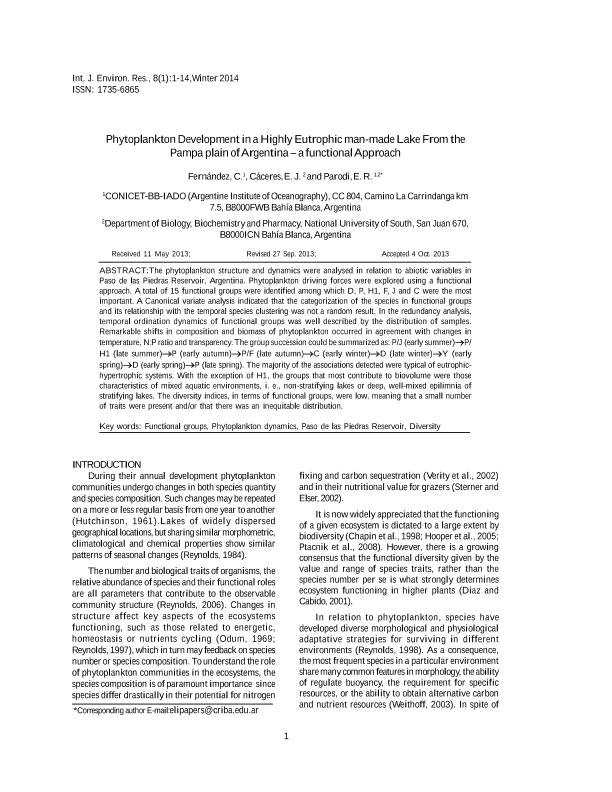Artículo
Phytoplankton development in a highly eutrophic man-made lake from the Pampa plain of Argentina. a functional approach
Fecha de publicación:
02/2014
Editorial:
Univ Tehran
Revista:
International Journal Of Environmental Research
ISSN:
1735-6865
Idioma:
Inglés
Tipo de recurso:
Artículo publicado
Clasificación temática:
Resumen
The phytoplankton structure and dynamics were analysed in relation to abiotic variables in Paso de las Piedras Reservoir, Argentina. Phytoplankton driving forces were explored using a functional approach. A total of 15 functional groups were identified among which D, P, H1, F, J and C were the most important. A Canonical variate analysis indicated that the categorization of the species in functional groups and its relationship with the temporal species clustering was not a random result. In the redundancy analysis, temporal ordination dynamics of functional groups was well described by the distribution of samples. Remarkable shifts in composition and biomass of phytoplankton occurred in agreement with changes in temperature, N:P ratio and transparency. The group succession could be summarized as: P/J (early summer)→P/ H1 (late summer)→P (early autumn)→P/F (late autumn)→C (early winter)→D (late winter)→Y (early spring)→D (early spring)→P (late spring). The majority of the associations detected were typical of eutrophichypertrophic systems. With the exception of H1, the groups that most contribute to biovolume were those characteristics of mixed aquatic environments, i. e., non-stratifying lakes or deep, well-mixed epilimnia of stratifying lakes. The diversity indices, in terms of functional groups, were low, meaning that a small number of traits were present and/or that there was an inequitable distribution.
Archivos asociados
Licencia
Identificadores
Colecciones
Articulos(IADO)
Articulos de INST.ARG.DE OCEANOGRAFIA (I)
Articulos de INST.ARG.DE OCEANOGRAFIA (I)
Citación
Fernández, C.; Cáceres, E. J.; Parodi, Elisa Rosalia; Phytoplankton development in a highly eutrophic man-made lake from the Pampa plain of Argentina. a functional approach; Univ Tehran; International Journal Of Environmental Research; 8; 2-2014; 1-14
Compartir




